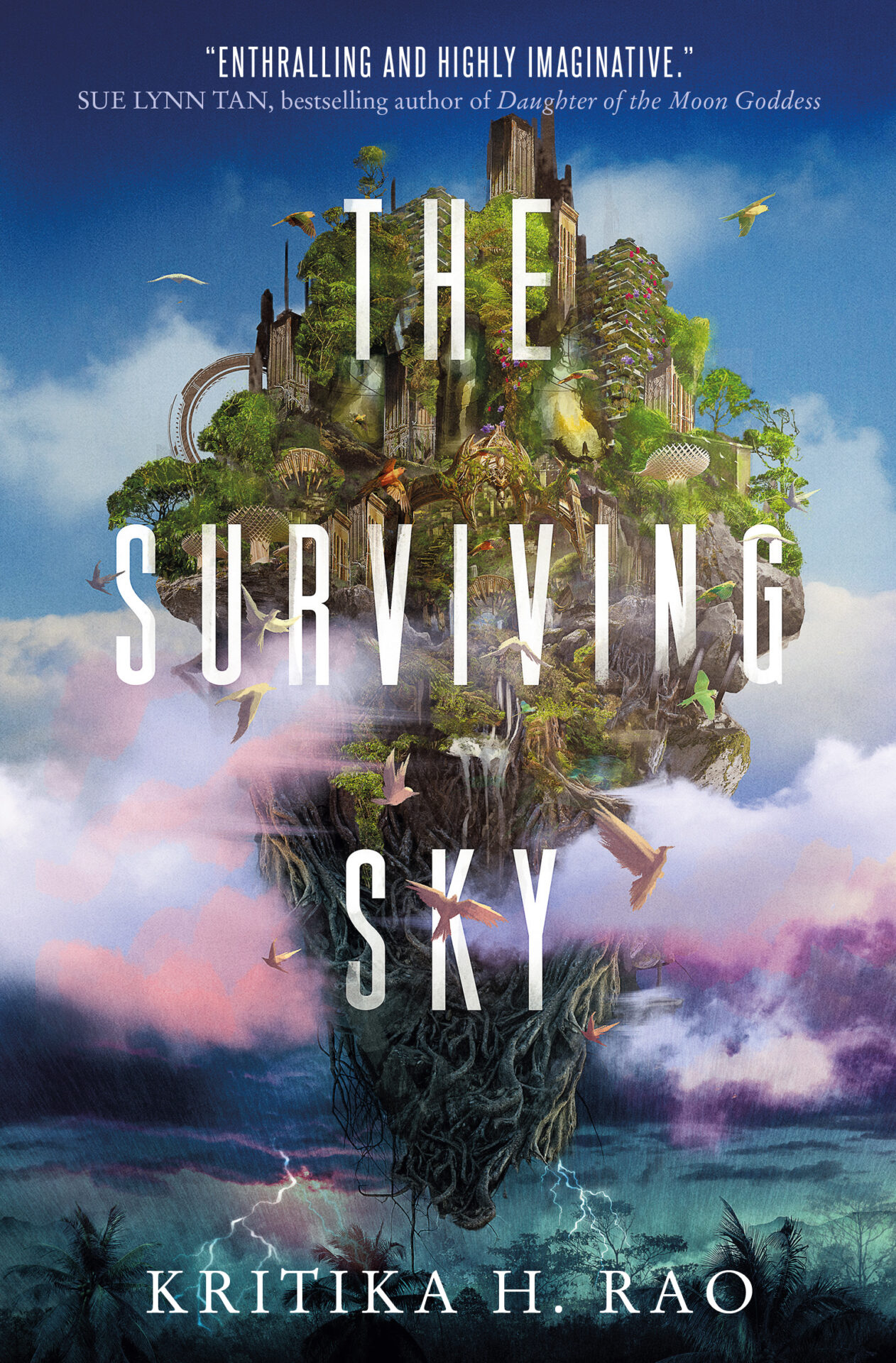
Kritika H. Rao is joining us today to talk about her novel, The Surviving Sky. Here’s the publisher’s description:
High above a jungle-planet float the last refuges of humanity—plant-made civilizations held together by tradition, technology, and arcane science. Here, architects are revered deeply, with humanity’s survival reliant on a privileged few. If not for their abilities, the cities would plunge into the devastating earthrage storms below.
Charismatic and powerful, Iravan is one such architect. His abilities are his identity, but to Ahilya, his archeologist wife, they are a method to suppress non-architects. Their marriage is thorny and fraught—yet when a jungle expedition goes terribly wrong, jeopardizing their careers, Ahilya and Iravan must work together to save their reputations. But as their city begins to plummet, their discoveries threaten not only their marriage, but their entire civilization.
What’s Kritika’s favorite bit?

Kritika H. Rao
As I write this essay, I’m flipping through one of my ARCs for The Surviving Sky, and going back and forth between some of the things I put into the book and the gorgeous cover art I got really lucky with. It’s a pretty easy answer. My favorite bit is the sheer layering and detailing of this world and story. The absolute weirdness of it.
I’ve waxed eloquent on this before, but boy, did I hit the jackpot when it came to cover art reflecting the world of the book. You could literally take a magnifying glass to the cover (and I have) and go over bit by bit to notice details that pop on closer examination. Intricate carvings cover some of the wooden bridges. That massive apartment building is a cross between functionality, status, and beauty. Towers and wooden stairs reach beyond the bridges and waterfalls to more plant architecture. And all of this combines into this gorgeous plant-city that hovers over terrible jungle storms, the very city a vision of beauty and life existing on the precipice of death; surviving. This is exactly the kind of detailing that went into the plotting and character/worldbuilding while I was writing the book.
I wrote The Surviving Sky during the depths of the pandemic, when our own world left a lot to be desired. I wrote it because I wanted to be lost in a different world—one that was deeply familiar and completely alien at the same time. This desire to lose myself had to be balanced with what was actually good for the book and story, of course. I remember making the kinds of decisions all worldbuilders do…. How much do I show on the page? How is this stuff connected? Will this bog down the pacing? How does it inform the plot? Do my characters need to notice it? Is this a fun and important and relevant detail, and most of all—will my readers care?
The Surviving Sky, and all the books of The Rages Trilogy are written not just for a first-time reading experience, but for a re-read too. Like the cover, the book unfolds itself layer by layer, showcasing just another bit of detail when it’s least expected and most needed. The details stand really well on their own—at least, that’s my hope—but also when seen in context with the larger plot and structure of the story. Just like the cover image.
People are responding to the world of The Surviving Sky with a lot of love—and that is super exciting to see. While writing, I never intentionally thought of how Hindu philosophy, consciousness, giant monster creatures, jungle storms, architects, archeology, married protagonists, floating plant cities, and bizarre engineering tech would interact with each other—and somehow be called epic fantasy. It just kind of happened because it made sense in my head, and I rolled with it—never truly stopping to think, huh, this is all so effing weird. It’s exciting to see how well it’s fallen into place. And what’s more exciting to see is that there are a bunch of weird, nerdy folks out there just like me who are into weird, nerdy stuff. I’m not really hearing anyone call it weird, to be clear—people are nice, and are saying original, which it is, sure, but also, let’s be honest. It is weird AF. I think that’s my favorite part – how it still makes sense despite that, or perhaps because of that. Kinda like our world, I guess.
LINKS:
BIO:
Kritika H. Rao is a science-fiction and fantasy writer, who has lived in India, Australia, Canada and The Sultanate of Oman. Kritika’s stories are influenced by her lived experiences, and often explore themes of consciousness, self vs. the world, and identity. She drops in and out of social media; you might catch her on Twitter or Instagram @KritikaHRao. Visit her online at www.kritikahrao.com. She currently lives in Calgary, Canada.
